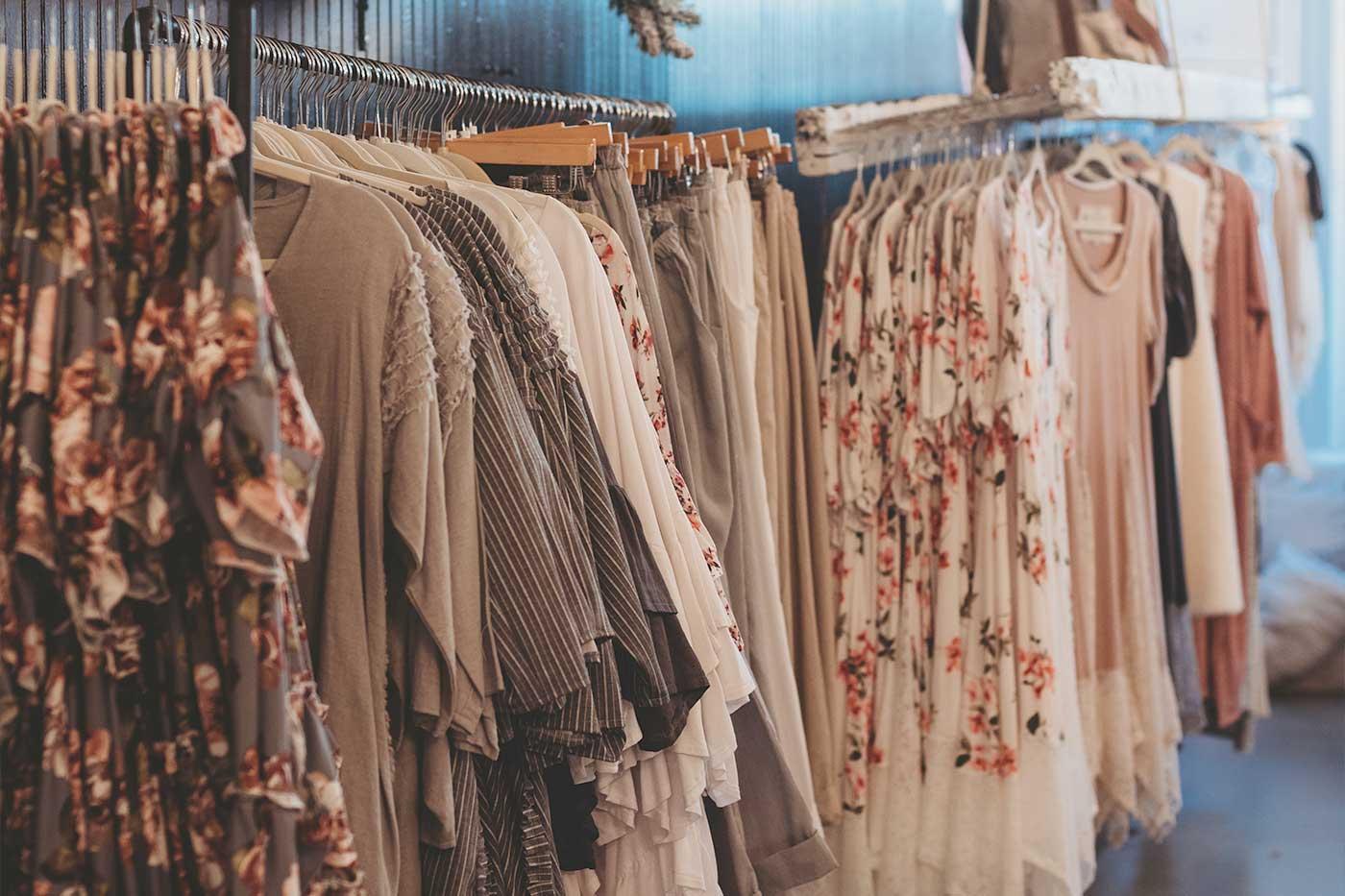Discovering the Advancement and Influence of Garments on Modern Fashion Trends
The evolution of clothes has substantially influenced contemporary fashion fads, combining historical criteria with innovative developments. Iconic numbers like Coco Chanel and Yves Saint Laurent changed the style sector by presenting principles that prioritize convenience and access, which continue to reverberate today.
Historical Style Influencers
In the tapestry of fashion history, specific numbers have left an indelible mark, forming the patterns and designs that specify entire periods. Coco Chanel, a revolutionary developer, redefined ladies's style by introducing comfy, classy clothing that departed from restrictive bodices.
Elsa Schiaparelli is an additional pivotal number, renowned for her progressive styles that integrated surrealist art, teaming up with Salvador Dalí to create whimsical pieces that tested conventional visual appeals. Her cutting-edge use color and bold patterns reverberates in modern style. Yves Saint Laurent, at the same time, equalized high style with prêt-à-porter collections, bringing path designs to the masses and establishing a precedent for contemporary ready-to-wear lines.
These dreamers, among others, not only revolutionized fashion in their times but also established sustaining fads that resonate in today's style industry, supplying a structure upon which modern designers remain to construct and introduce. Their legacies underscore the relevance of creative thinking and bold in style's ever-evolving story.
Technical Improvements in Style
Among the dynamic landscape of the apparel industry, technical innovations stand at the forefront of innovation, reshaping how developers create and customers engage with fashion. The combination of 3D printing has revolutionized style processes, allowing developers to explore complex frameworks and sustainable products that were formerly unthinkable. This modern technology assists in rapid prototyping, lowering waste and expediting production times.

Smart fabrics, embedding modern technology right into textiles, are also changing the market. Developments like self-cleaning and temperature-regulating textiles provide enhanced capability and convenience. Wearable technology, integrating functions like health and fitness tracking and interaction, adds a new measurement to style, combining looks with practicality.
Social Shifts and Style
As technological developments proceed to improve the fashion business, social changes are similarly prominent, redefining style and customer choices. Over the last few years, the surge of social media sites platforms has accelerated the circulation of international fashion patterns, permitting varied social impacts to assemble and coexist. This digital interconnectivity has actually promoted the quick exchange of ideas, causing a more diverse and comprehensive analysis of design that mirrors the complex nature of modern-day society.
Cultural understanding and recognition have actually motivated developers to attract inspiration from a broader range of historic and ethnic contexts, incorporating standard concepts with modern visual appeals. This blend has actually led to style that reverberates with a larger target market, promoting a feeling of identification and belonging throughout various demographics. In addition, the enhancing need for personalization has actually driven brand names to provide personalized options, allowing consumers to express originality while showing their social heritage.
Additionally, changing societal worths have impacted fashion, with inclusivity and diversity ending up being main themes. The industry has begun to welcome models and influencers of different type of body, ethnic cultures, and gender identifications, difficult conventional beauty criteria. This change emphasizes the power of cultural changes in shaping the future of style, as design comes to be an extra genuine expression of personal and collective identity.
Sustainability and Modern Design
While go to these guys the style sector proceeds to advance, the crucial for sustainability has come to be significantly immediate, affecting modern style techniques. The surge of slow-moving fashion, which emphasizes high quality over amount, encourages customers to spend in ageless items instead than transient fads.
Moreover, contemporary layout is defined by its advancement in minimizing waste and promoting circularity. This strategy not only mitigates environmental impact but also improves the social obligation of style residences.

Future Trends in Style

Sustainability will certainly continue to be a driving pressure in forming future style patterns. The market is progressively taking on environment-friendly materials and ethical manufacturing techniques, reacting to an expanding customer need for liable techniques. Advancements such as bio-fabricated materials and closed-loop recycling systems are readied to redefine exactly how clothes is produced and taken in, reducing ecological influence while keeping design and quality.
Social changes, including the rise of inclusivity and variety, will certainly additionally play a critical function. As society ends up being much more familiar with social concerns, style is expected to become a system for expression and change. Developers will likely concentrate on producing collections that mirror a wider series of identifications and experiences, championing depiction and availability.
Conclusion
The development of clothes substantially affects modern style fads, where historic impacts combine with modern designs. Trick figures like Coco Chanel and Yves Saint Laurent have actually redefined my review here style, while technological innovations such as 3D printing and smart fabrics increase imaginative opportunities. visit this site Social shifts towards inclusivity and sustainability compel brands to embrace ethical techniques and embrace variety. This continuous advancement highlights style's duty as a mirror to social values and technical improvement, recommending a future rich with technology and inclusivity.
The advancement of clothing has considerably affected modern style patterns, merging historic precedents with advanced innovations.Among the vibrant landscape of the style market, technical improvements stand at the center of technology, improving how designers produce and customers engage with fashion.While the style industry continues to evolve, the essential for sustainability has actually ended up being progressively immediate, influencing modern-day layout techniques. As sustainability ends up being ingrained in modern-day style, it paves the means for a more liable and conscious style market.
The development of apparel considerably affects contemporary style patterns, where historic impacts merge with modern designs.